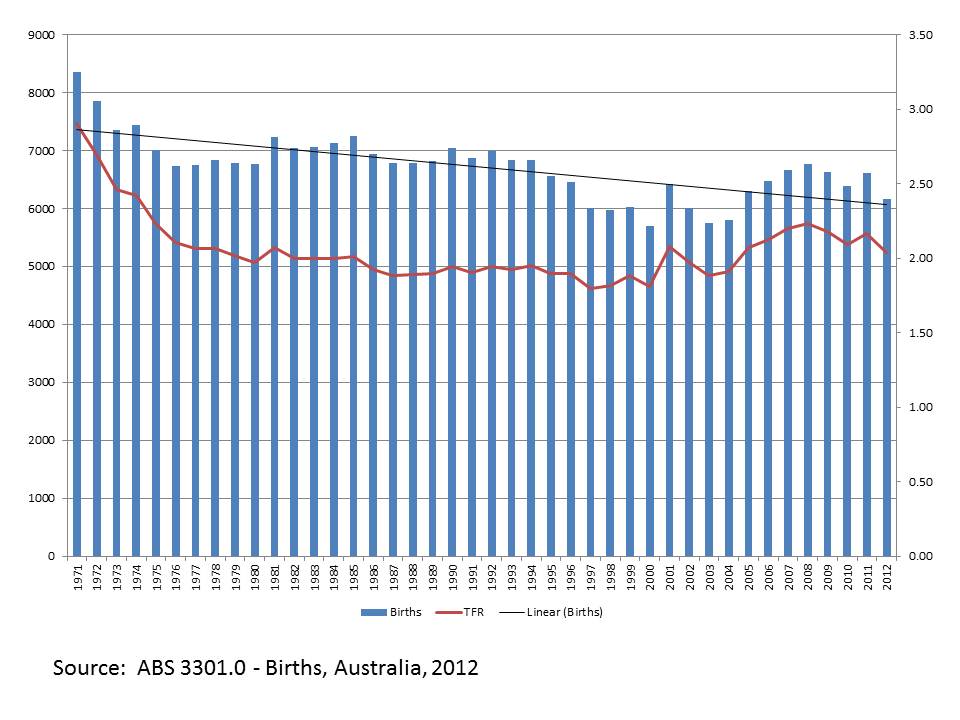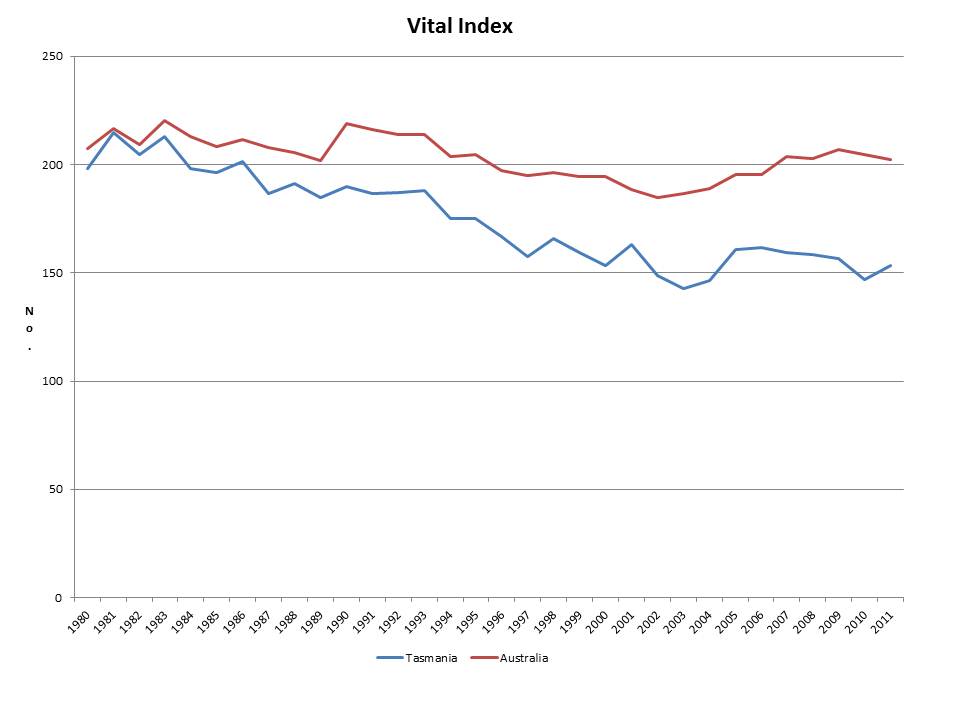The two correlates for population growth are the size of the reproductive cohort and economic performance. In Tasmania, both of these correlates have a direct relationship with net interstate migration (NIM).
For the 2012 year, births in Tasmania decreased to 6168 (from a high in 2007 of 6775) and the Total Fertility Rate (TFR) dropped to 2.04, below replacement rate (the NT is now the highest at 2.21). All other states and territories, apart from NSW, recorded an increase in both the number of births and the TFR.
The drop in births is directly attributable to the declining size of the reproductive cohort as a result of NIM movements. Furthermore, it directly impacts on Tasmania's propensity for population growth over both the short and longer term.


